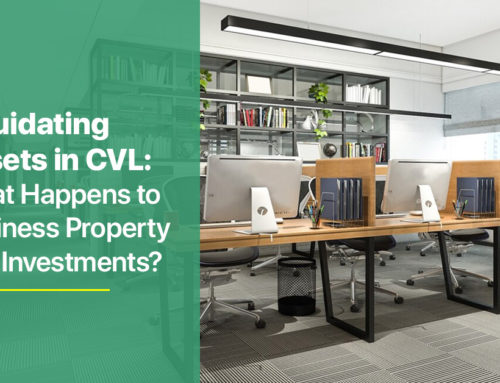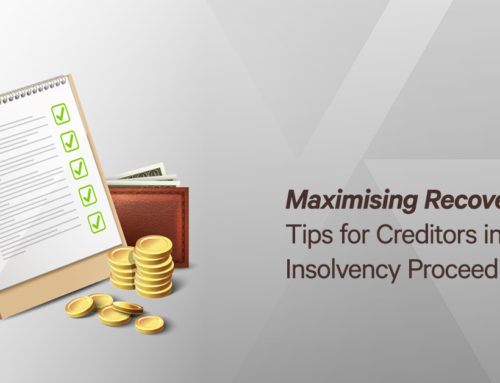Running a business can be tricky, and a lot of the time, organisations can find themselves in times of financial hardship. Similarly, there are a lot of organisations who decide to simply call it a day. One of the most popular methods that can be used when an organisation would like to stop trading is creditors’ voluntary liquidation.
What is Voluntary Liquidation?
Voluntary liquidation is the decision to close down an organisation; this usually happens when the threat of liquidation is already looming. One of the significant benefits of voluntary liquidation is that if creditors opt for it, they can choose their own liquidators.
Once the decision to enter liquidation is confirmed by a vote, the company needs to wind up and dissolve. When liquidation is voluntary, it means that it is the organisation’s decision and not one that has been forced on them by the court, which often happens when liquidation is compulsory.
A company does not need to be in financial trouble in order to enter a creditor’s voluntary liquidation; it might be the case that they are just solvent and would like to formally close. So long as the members of a company vote to close down a company, then that can occur.
Why Would a Company Be Put into Creditor’s Voluntary Liquidation?
There are a number of reasons as to why a company would be put into creditor’s voluntary liquidation. These include but are not limited to the following:
- A Winding Up Petition: If a company received a winding up petition or a statutory demand from a trade creditor, it could put them into voluntary liquidation. This tends to happen when a company cannot pay its debts and, as a result, wants to enter into voluntary liquidation rather than compulsory liquidation.
- Insolvent on the Balance Sheet Test: When a company considers how much money it has compared to its liabilities, it may well be the case that it is insolvent as per the balance sheet test. Losses increase when this happens, so to avoid further damage, many companies put themselves into voluntary liquidation.
- The Company Can No Longer Pay Rent: Companies pay rent when they rent office and warehouse space. If they are unable to pay this, then it may be that the landlord has asked the bailiff to seize assets, and this could mean the creditor’s voluntary liquidation.
- Substantial Debt: If the company has suffered from a large amount of debt and, as such, is unable to meet its current liabilities, then it may well be the case then the creditors start to demand payment, and this results in voluntary liquidation.
- A Shift in the Industry: Industries are prone to change and sometimes, these changes can be so significant that it has an impact on an ability to trade. For instance, if there is a sudden change in industry standards or a disruption within a market then the company might struggle financially, not know how to adapt and as such, opt for liquidation.
What Are the Advantages of a Creditor’s Voluntary Liquidation?
A lot of organisations are happier to go into voluntary liquidation as opposed to compulsory liquidation. Some of the main advantages that come with creditor’s voluntary liquidation include but are not limited to the following:
- Directors Have Control: Unlike when a company goes into compulsory liquidation, in voluntary liquidation, directors have more control over the process as they can choose when they enter into liquidation and are also able to appoint their own liquidators. If they were forced into liquidation, then the official receiver takes control.
- Potential to Claim Redundancy: When a company is placed into liquidation, then it’s unlikely that the directors are able to claim redundancy pay. That being said, if a director has worked as an employee for a company for the last two years or so then they might be able to as they could be entitled to the same benefits as regular members of staff.
- Fulfilling Legal Obligations: As per the insolvency law within the UK, directors need to be aware of their company’s financial position at all times. When they enter into voluntary insolvent liquidation, they are able to effectively prove that this is the case as they are able to limit the number of creditor losses that they face whilst keeping their own reputation intact at the same time.
- Debts Get Written Off: Once the end of the creditors’ voluntary liquidation is reached, all of the debts are written off, meaning that the pressure from creditors is alleviated, and the director has the ability to move on to different ventures without there being any kind of burden of debt.
- Reduced Allegations of Wrongful Trading: When a company makes the decision to enter into liquidation, directors are proving that they value the interests of their creditors. A lot of the time, when an organisation is liquidated, following that liquidation is a plethora of allegations of wrongful trading, but these would be unlikely.
Do You Need Help with Creditors Voluntary Liquidation?
As can be seen above, there are a number of different reasons as to why an organisation might be placed under creditor’s voluntary liquidation, and it doesn’t necessarily have to be because they are under financial hardship. There are also plenty of benefits that come with choosing to go into liquidation rather than buying time and eventually being placed under compulsory liquidation. If, upon considering these different options, then you may be interested in entering into voluntary liquidation. If this is the case, but you need some form of assistance, then be sure to let us at Leading UK help.
Leading UK have a team of experts on hand who will take the time to get to know you and your business, assess the situation and your industry and then provide advice on how you should progress. If you would like any more information or have any questions at all about how we can help then do not hesitate to get in touch.






